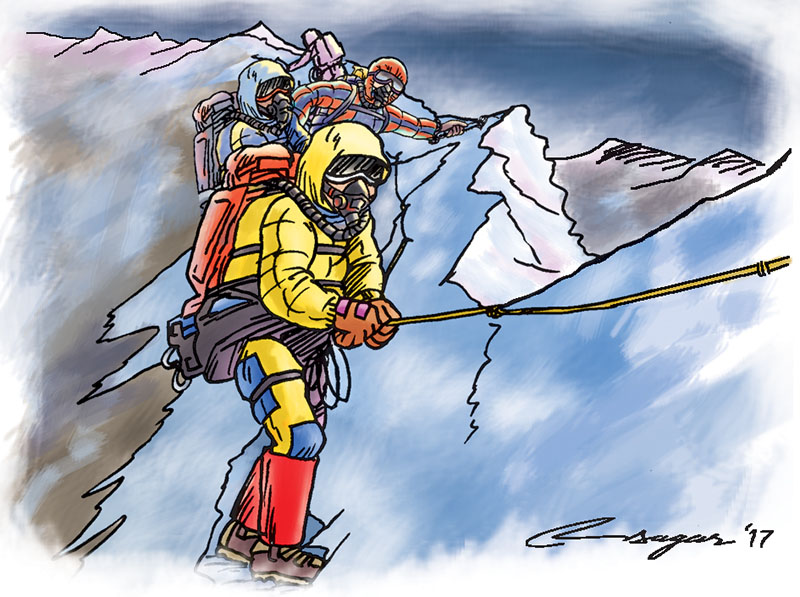
Source: https://thehimalayantimes.com/opinion/altitude-sickness-dos-donts (Ratna Sagar Shrestha/THT)
It was during the late spring of 2016 when I first learned about HAPE. I was daydreaming in a college lecture hall, thinking about two climbers who were attempting to summit Mt. Everest without the use of supplemental oxygen. I had been captivated by their story as they were using social media platforms like SnapChat and Instagram to capture their journey as close to real-time as possible. I would constantly refresh my feeds, patiently waiting to hear about the good, bad, and ugly realities of climbing such a huge mountain. While we have all probably watched movies or read stories of people climbing Mt. Everest, having this personal first-hand view gave me insight into just how hard and dangerous and beautiful Mt. Everest is. The climbers are two famous alpinists, Adrian Ballinger who owns his own expedition company called Alpenglow Expeditions, and Cory Richards who specializes in storytelling and photography in the mountains. As they shared their journey, I learned about HAPE which is short for High Altitude Pulmonary Edema.
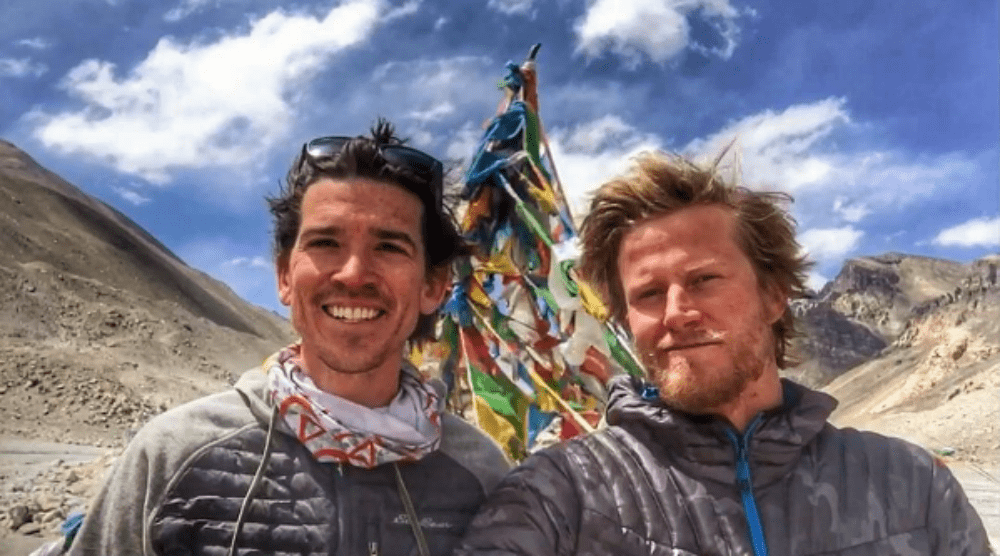
Source: https://ftw.usatoday.com/2016/06/everest-no-filter-snapchat-adrian-ballinger-cory-richards
HAPE is a serious, often fatal condition that can occur to people when they reach altitudes over 2500 meters (8,200ft). When climbers ascend to high altitudes, the rapid change in air pressure can cause fluid to fill up in the lungs. This leads to extreme fatigue, dry cough, and shortness of breath. HAPE is one illness under the family of high-altitude illnesses (HAI) which includes the classic Acute Mountain Sickness (AMS) which most people refer to as general altitude sickness. AMS is the classic mild lightheadedness and nausea that you may have felt before when at higher elevations. High Altitude Cerebral Edema, one of the most severe forms of altitude sickness occurs when fluid fills the brain due to the oxygen pressure differences between your body and the air.
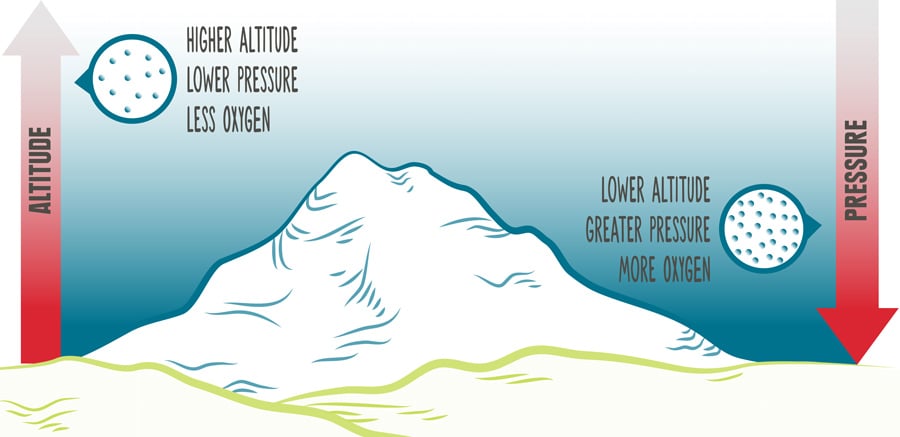
Source: https://www.rei.com/learn/expert-advice/altitude-sickness.html
Mt. Everest stands at a daunting 8,848.86 meters ((29,031.7 ft). Thus, you can imagine that even before you step into base camp at 17,000ft, climbers are at risk for HAPE as well as all HAI. As I followed Adrian and Cory on their journey, they often talked about HAI and its dangers, but also how they worked hard to prevent them. Most people climb Mt. Everest and other 8000m peaks with supplemental oxygen, meaning that they bring oxygen tanks with them to use at high altitudes. The summit of Mt. Everest is said to have approximately 33% of the oxygen which we breathe comfortably at sea level.
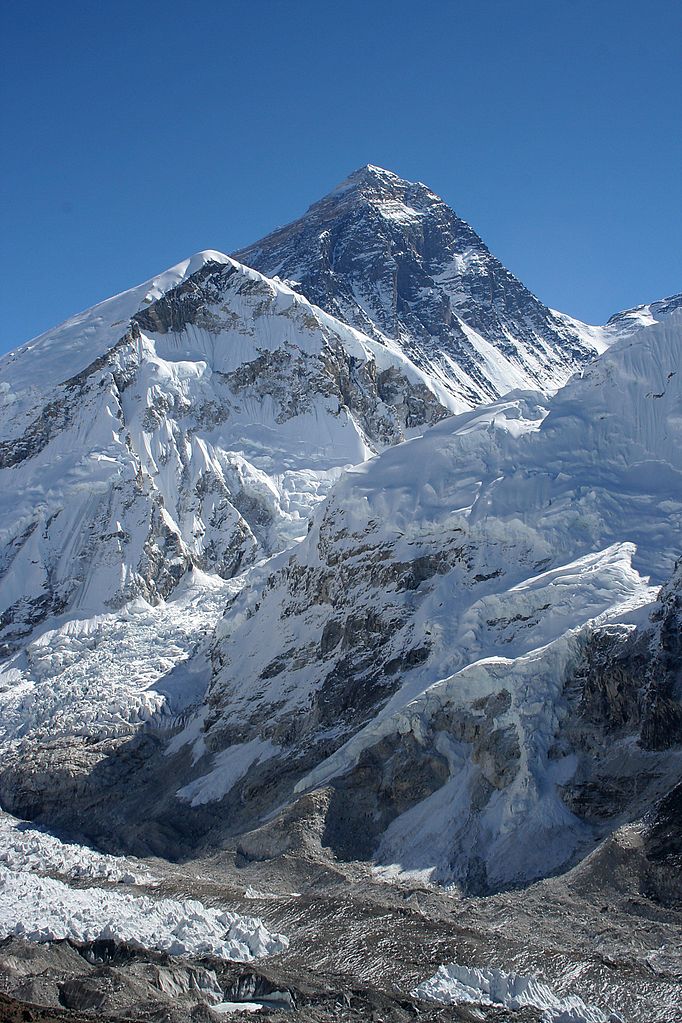
Source: https://en.m.wikipedia.org/wiki/Mount_Everest
While most people are not about to climb Mt. Everest, anyone traveling over 8,000 ft is at risk for HAPE or other HAI. Many recreation areas are often accessible by car or hiking to 8,000 ft. For example, Summit County in Colorado has elevations ranging from 7,000 ft to 14,000 ft. Many visitors will go to this beautiful and wild region in hopes of hiking or skiing in the Rockies. However, many are unaware of the invisible dangers that await them as they set out on their adventures without properly acclimatizing. While it’s easy to romanticize HAPE and other HAI as being reserved for professional climbers seeking high endeavors, it is important to remember that it can also happen on your adventure vacation. I remember when I first skied in Colorado. I went to Keystone Resort which sits at a notable 9,000 ft above sea level. The first few days I skied there, I experienced mild headaches and shortness of breath as my body adjusted to the elevation. It was a stark reminder for me that even at a relatively safe ski resort, tuning into my body and watching for early symptoms of HAI was critical.
What can you do to prevent HAPE and other HAI? How about sleeping on Mt. Everest from your bedroom? If this sounds like a crazy idea, you’re not wrong. But some athletes are now bringing Everest to their cozy beds in hopes that preparing in high altitude simulated environments will help their bodies prepare for the real altitude when they are climbing. The results from these regimens have been so successful that many athletes have adopted the phrase “Live High, Train Low”. Hypoxico tents are one of the first and leading solutions for this method. Available in many custom sizes and configurations, Hypoxico tents and others like it simulate the barometric pressure and oxygen saturation of the air at customizable altitudes.
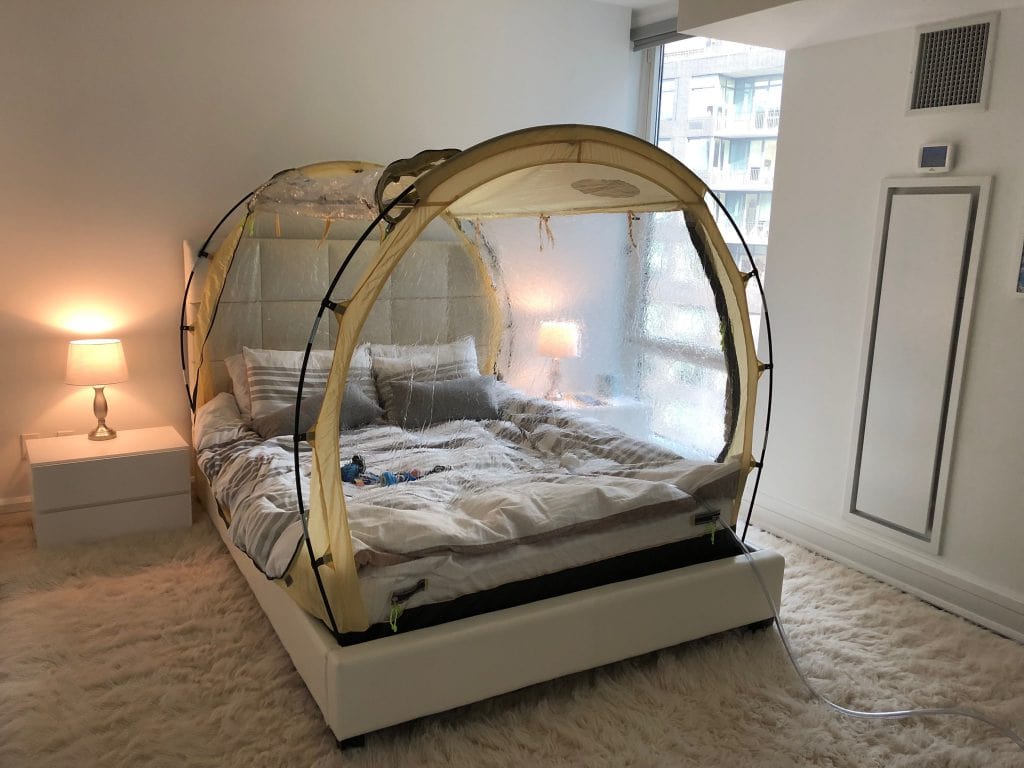
Source: https://hypoxico.com/sleeping-at-altitude/
Hypoxia is a condition that precedes HAPE and is characterized by a lack of oxygen to the body’s tissue. This occurs when the body is not able to get enough oxygen or there is less oxygen in the air. The Hypoxico tents and other similar solutions rely on “induced hypoxia” to help stimulate the body to produce red blood cells which can hold more oxygen. Training this way over time allows an athlete’s body to acclimatize without traveling to higher altitudes. By sleeping in these chambers, an athlete exposes themselves to oxygen deprivation while allowing themselves to train at normal levels to build the endurance and muscles needed to perform their endeavors.
While you might not need to rush off to buy a high-altitude simulated chamber, you can still prepare to have the best and safest experience on your next big adventure. Whether you are skiing in the high Canadian Rockies, getting ready to summit your first Pacific Northwest volcano, or simply going for a hike in the high Utah desert you can prepare for your best performance. Experts advise you to drink plenty of water, avoid alcohol and sleeping pills, and temper your altitude gains over longer periods to avoid altitude sicknesses. If you or your climbing partner ever experience any symptoms of HAI or HAPE, the best medicine is to go down to lower elevations as soon as possible. When in doubt, I like to use the mantra “Safety Before Sending”.
I think back to that college lecture hall when I was eagerly awaiting news from Adrian and Cory. I was giddy with excitement and fear as I wondered if they had made the summit of Mt. Everest. It’s easy to be scared after learning about HAPE and other climbing dangers, but instead, I was inspired. Two guys just climbed Mt. Everest on SnapChat. What a world we live in. Let’s go climbing.
References:
- https://en.wikipedia.org/wiki/High-altitude_pulmonary_edema
- https://www.webmd.com/a-to-z-guides/altitude-sickness
- https://www.ncbi.nlm.nih.gov/books/NBK430819/
- https://en.m.wikipedia.org/wiki/Summit_County,_Colorado
- http://www.vmeverest09.com/oxygen-at-altitude/
- https://www.summitdaily.com/news/pushing-the-limit-understanding-the-bodys-performance-at-high-elevation/
- https://www.keystoneresort.com/the-mountain/about-the-mountain/mountain-info.aspx